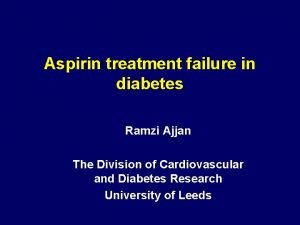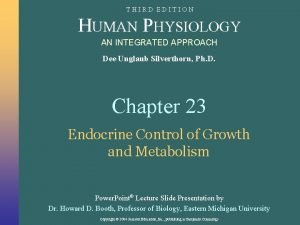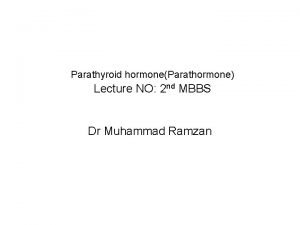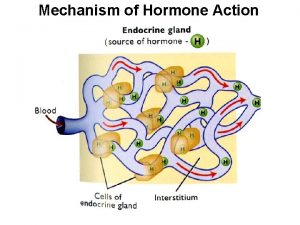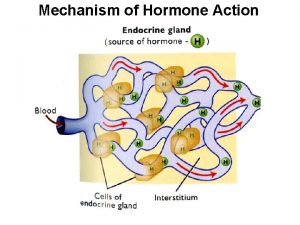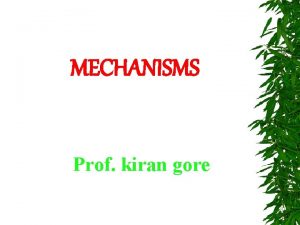Mechanisms of Hormone Action Hormone action on target






- Slides: 6

Mechanisms of Hormone Action • Hormone action on target cells 1. Alter membrane permeability of ion channels 2. Synthesis of proteins or regulatory molecules 3. Activate or deactivate enzyme 4. Induce secretory activity 5. Stimulate mitosis Copyright © 2010 Pearson Education, Inc.

Steroid hormone Plasma membrane Extracellular fluid 1 The steroid hormone diffuses through the plasma membrane and binds an intracellular receptor. Cytoplasm Receptor protein Receptorhormone complex 2 The receptor- Nucleus Hormone response elements DNA m. RNA hormone complex enters the nucleus. 3 The receptor- hormone complex binds a hormone response element (a specific DNA sequence). 4 Binding initiates transcription of the gene to m. RNA. 5 The m. RNA directs New protein Copyright © 2010 Pearson Education, Inc. protein synthesis. Figure 16. 3

1 Hypothalamic Paraventricular nucleus Supraoptic nucleus Optic chiasma Infundibulum (connecting stalk) Hypothalamichypophyseal tract Axon terminals Posterior lobe of pituitary Hypothalamus neurons synthesize oxytocin and ADH. 2 Oxytocin and ADH are Inferior hypophyseal artery transported along the hypothalamic-hypophyseal tract to the posterior pituitary. 3 Oxytocin and ADH are stored in axon terminals in the posterior pituitary. 4 Oxytocin and ADH are Oxytocin ADH released into the blood when hypothalamic neurons fire. (a) Relationship between the posterior pituitary and the hypothalamus Copyright © 2010 Pearson Education, Inc. Figure 16. 5 a

Hypothalamus Hypothalamic neuron cell bodies Superior hypophyseal artery Hypophyseal portal system • Primary capillary plexus • Hypophyseal portal veins • Secondary capillary plexus Anterior lobe of pituitary TSH, FSH, LH, ACTH, GH, PRL 1 When appropriately stimulated, hypothalamic neurons secrete releasing and inhibiting hormones into the primary capillary plexus. 2 Hypothalamic hormones travel through the portal veins to the anterior pituitary where they stimulate or inhibit release of hormones from the anterior pituitary. 3 Anterior pituitary hormones are secreted into the secondary capillary plexus. (b) Relationship between the anterior pituitary and the hypothalamus Copyright © 2010 Pearson Education, Inc. Figure 16. 5 b

Anterior Pituitary Hormones • Growth hormone (GH) • Thyroid-stimulating hormone (TSH) or thyrotropin • Adrenocorticotropic hormone (ACTH) • Follicle-stimulating hormone (FSH) • Luteinizing hormone (LH) • Prolactin (PRL) Copyright © 2010 Pearson Education, Inc.

Hypothalamus TRH Anterior pituitary TSH Thyroid gland Thyroid hormones Target cells Copyright © 2010 Pearson Education, Inc. Stimulates Inhibits Figure 16. 7

